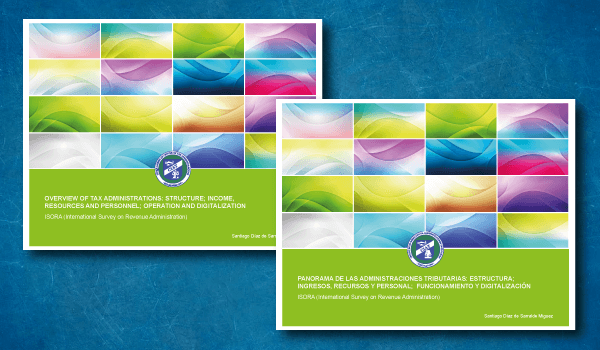Overview of Tax Administrations: structure; income, resources and personnel; operation and digitalization ISORA (International Survey on Revenue Administrations)

This new publication summarizes some of the most relevant information contained in the ISORA survey (International Survey on Revenue Administrations) for the last available year (2017). They review the institutional structure, organization and autonomy of Tax Administrations (TAs), their income, resources and personnel, and basic characteristics of their operation, with particular attention to the digitalization of the Tax Administrations (taxpayer segmentation, registration channels, return filing and payment; provision of electronic services, electronic invoicing systems; tax arrears; audit results).
ISORA is the result of joint efforts by the IMF, IOTA, OECD, ADB and CIAT, a single, homogeneous survey of domestic revenue administrations that complements and continues the efforts already made in this area in previous years -BID, CAPTAC-RD, CIAT (2012); CIAT (2016); “Tax Administration Comparative Information Series” OECD since 2004, the IMF RA-FIT platform, etc. It keeps information on tax administrations from 159 countries representing 90.37% of world GDP and 88.5% of the total world population in 2017 (more than 6,600 million people). Among them are 37 CIAT member countries, accounting for 39% of GDP and 37.1% of the population.
After a brief introduction to coverage and history of ISORA, the content is organized into three chapters and discuss the results of the survey, summarized in 45 tables and 22 graphs which offer information aggregated by groups of countries (depending on their income level) and individually for the CIAT member countries.
In particular, regarding CIAT member countries, the results show the significant progress of the organization’s TAs. These administrations, with a high degree of autonomy and despite having relatively modest budgets, manage their operation with low costs in relation to their collection (the average cost stood at 1.24%, superior only to the average recorded in high-income countries) even having a workforce that face a heavy workload in relative terms.
This is facilitated by the technological breakthrough that is reflected in the survey data:
For TAs, ISORA provides a framework for identifying strengths, weaknesses and best practices, both globally and by income level or geographic areas. We hope that in the future ISORA will keep helping to identify outstanding issues for global TAs and in particular the CIAT member countries.
4,709 total views, 10 views today
